Abstract
Since about 250 BC, human modification of African environments has created increasingly favourable breeding conditions for Anopheles gambiae. Subsequent adaptations to the increased malaria risk are briefly described and reference is made to Macdonald's mathematical model for the disease. Since values for the variables in that model are high in tropical Africa, there is little possibility that simple, inexpensive, self-help primary health care initiatives can control malaria in the region. However, in combination with more substantial public health initiatives, simple primary health care activities might be done by communities to (1) prevent mosquitos from feeding on people, (2) prevent or reduce mosquito breeding, (3) destroy adult mosquitos, and (4) eliminate malaria parasites from human hosts. Lay methods of protection and self-care are examined and some topics for further research are indicated. Culturally appropriate health education methods are also suggested.
Full text
PDF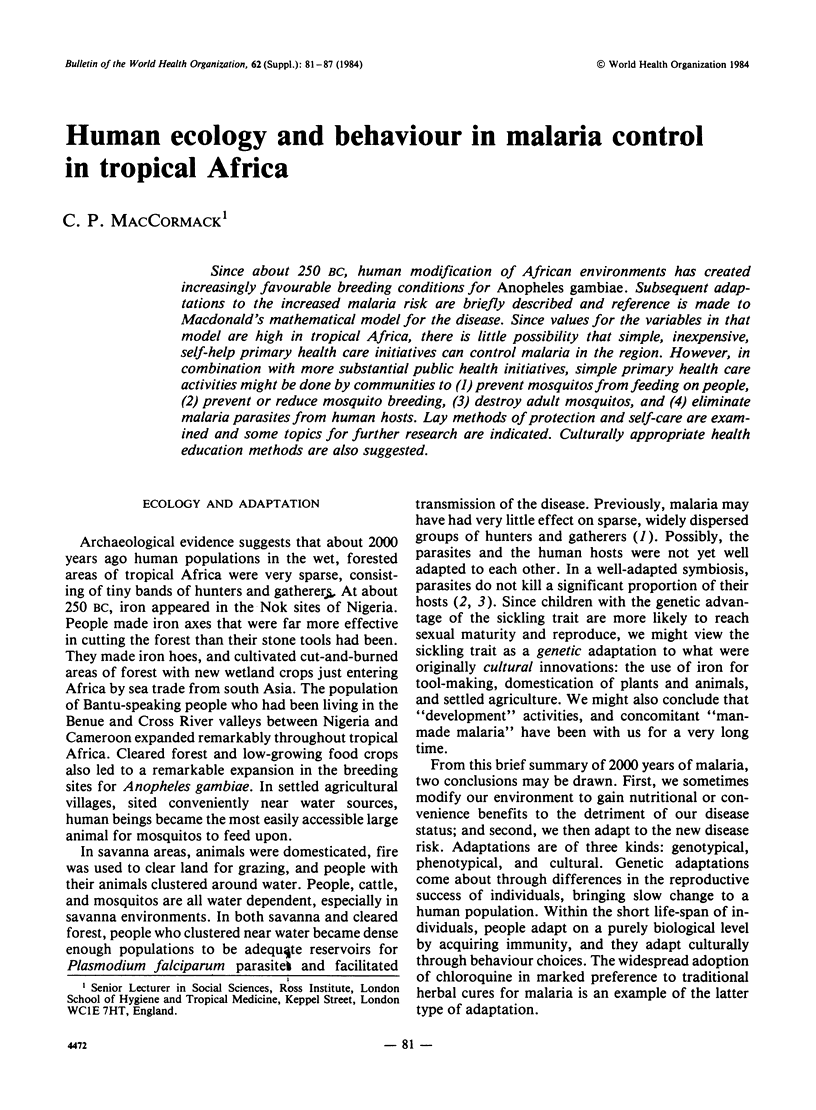
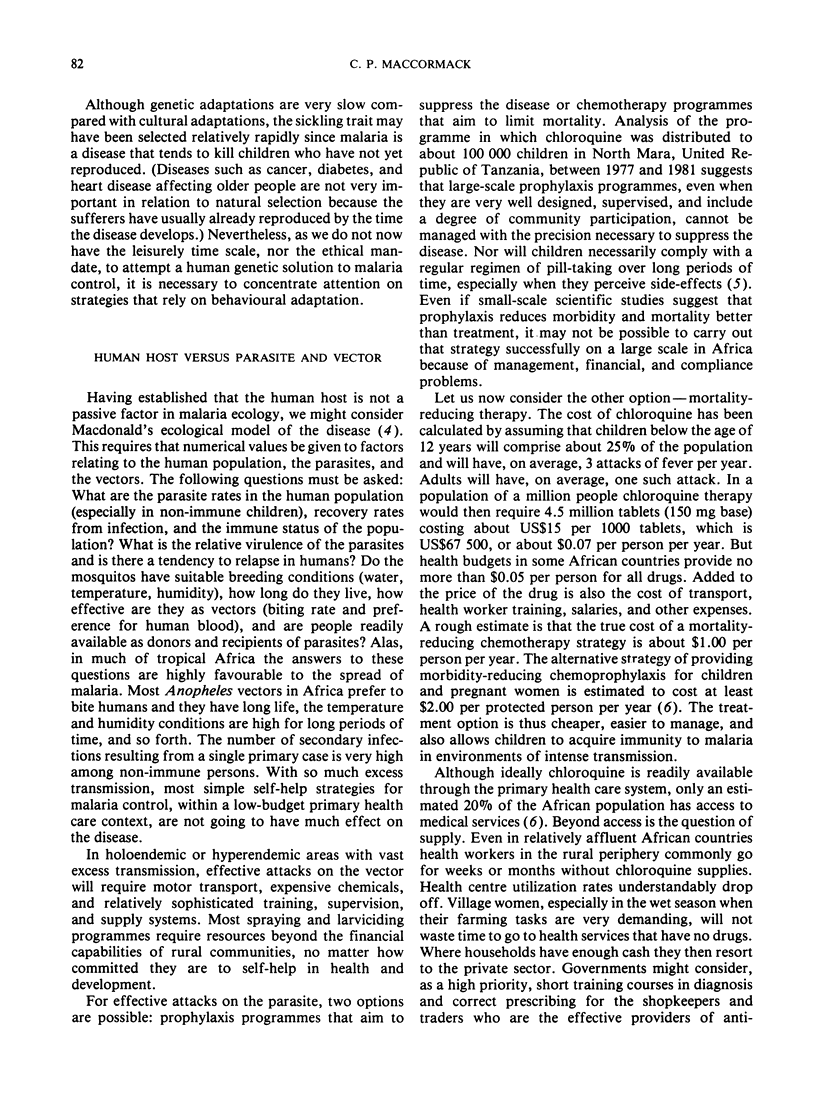
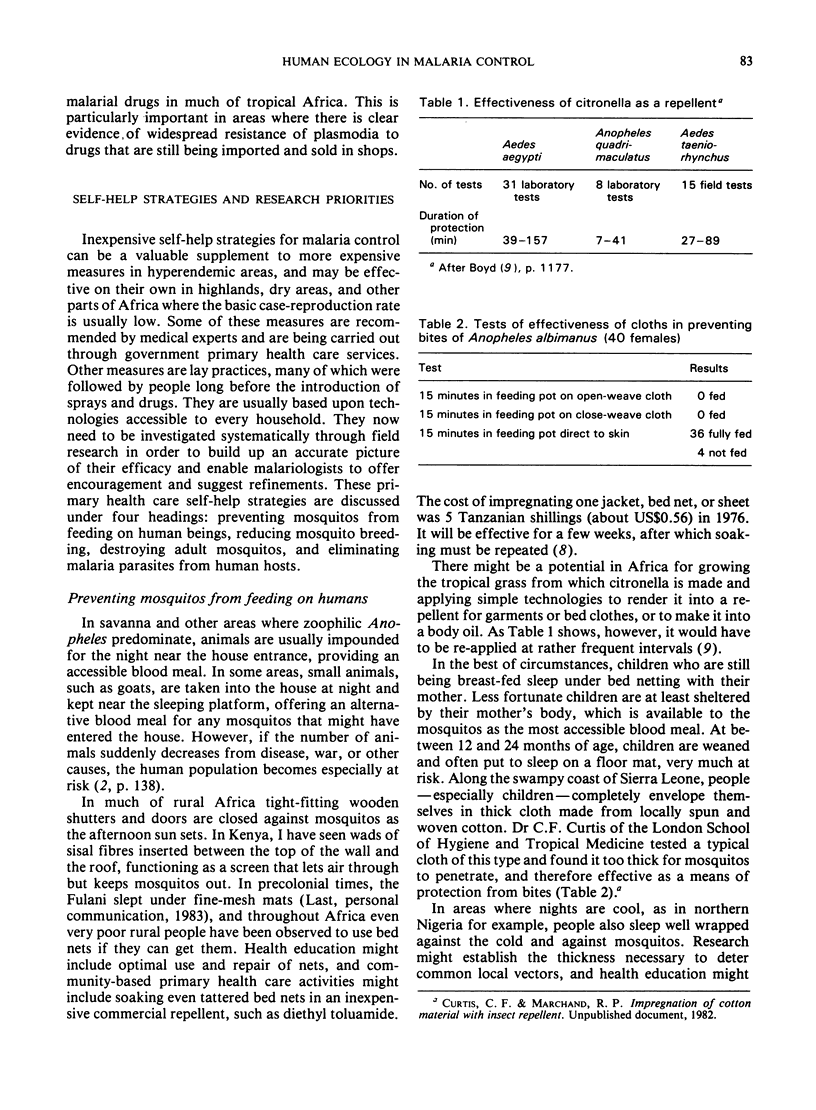
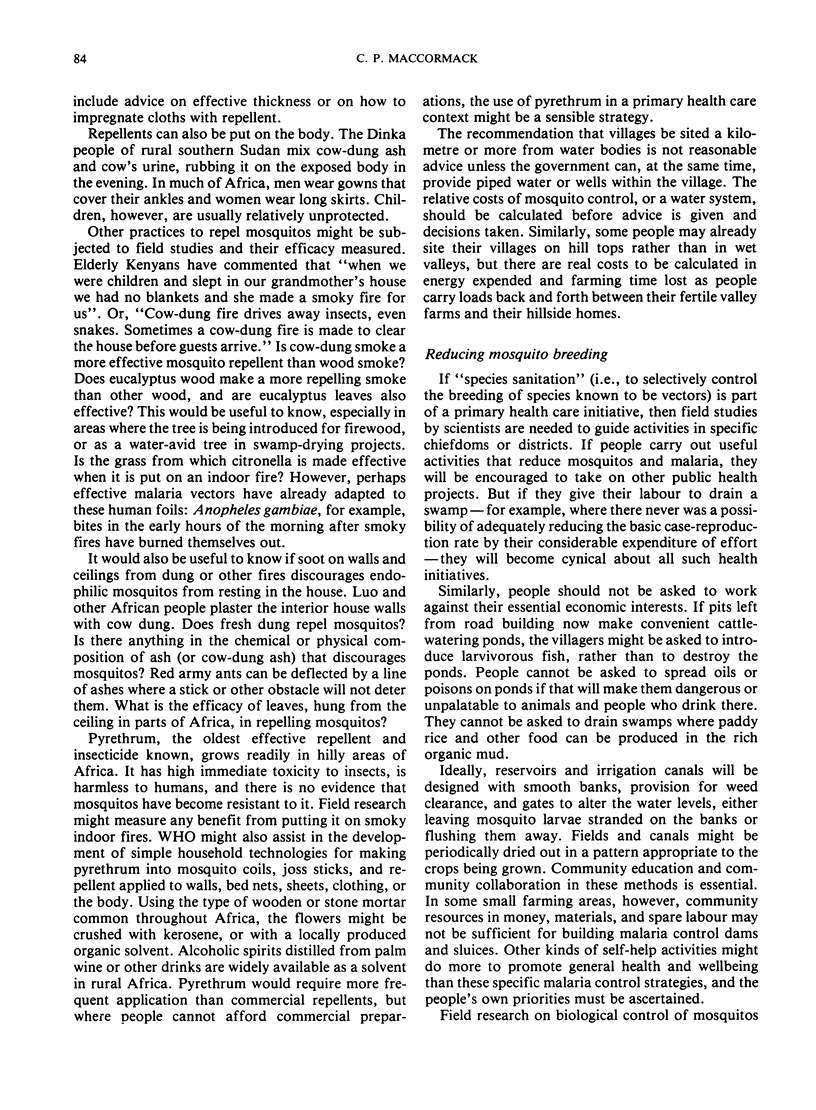
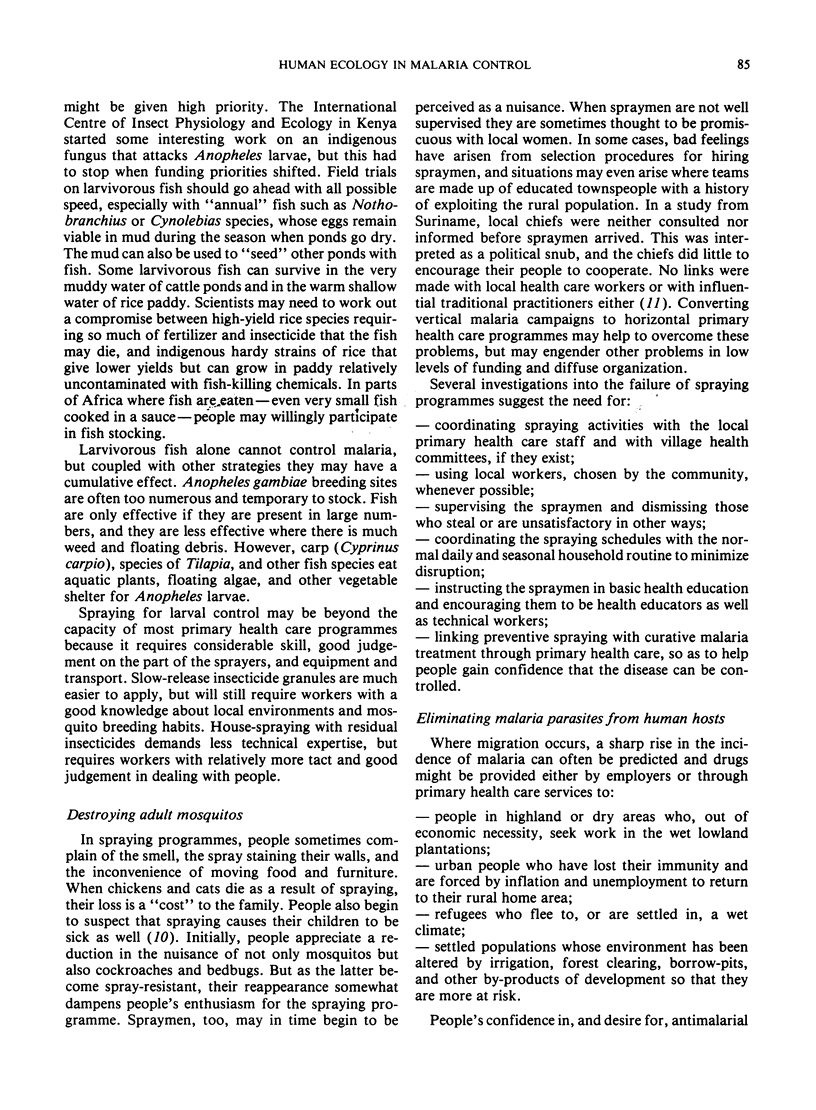
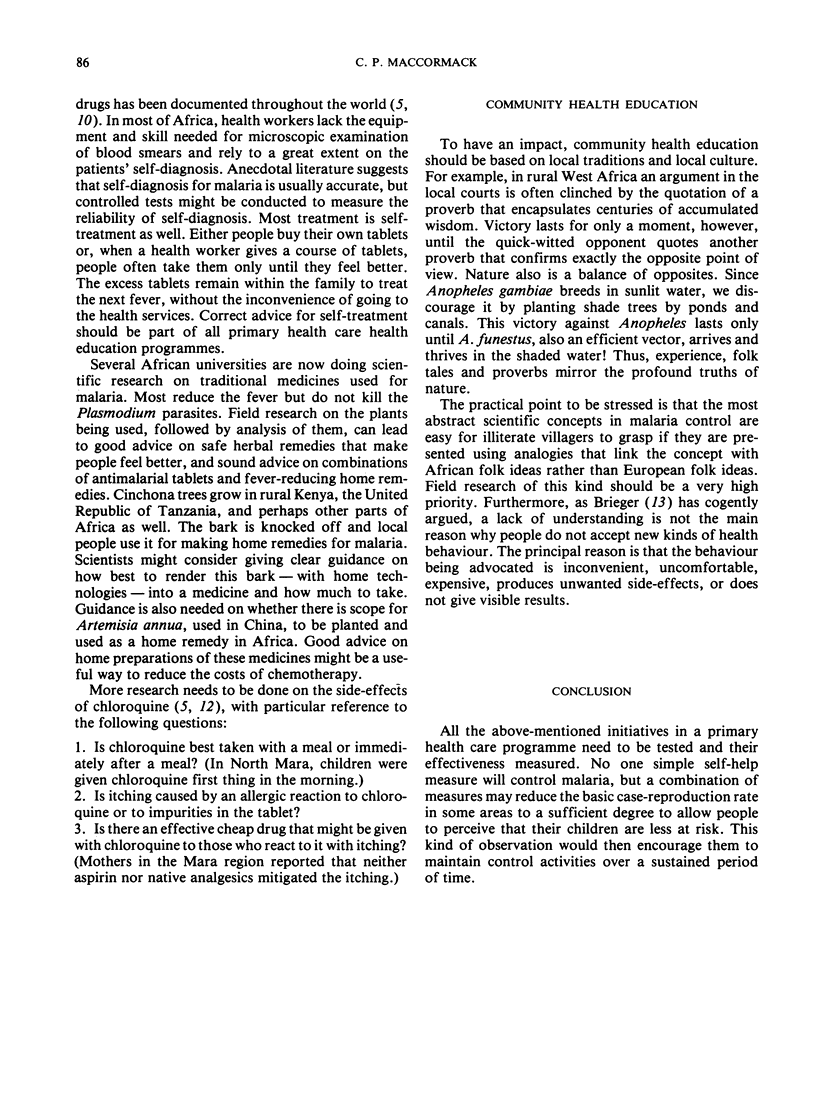
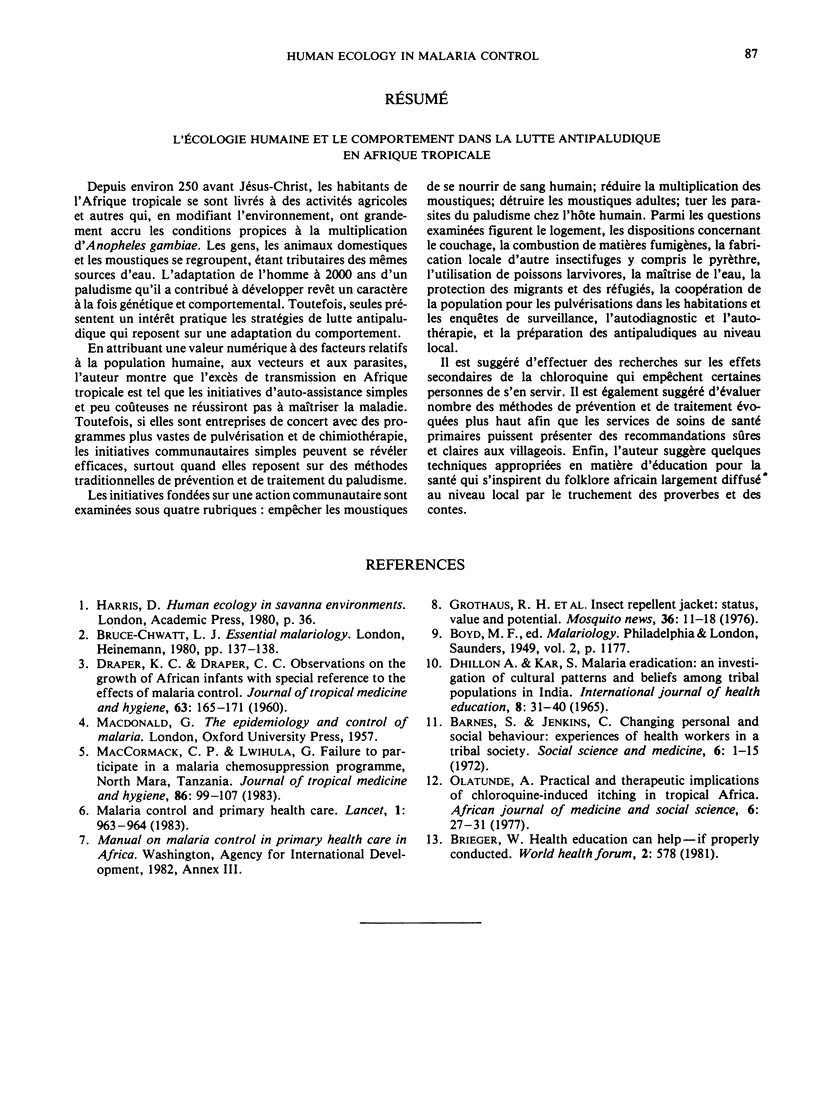
Selected References
These references are in PubMed. This may not be the complete list of references from this article.
- Barnes S. T., Jenkins C. D. Changing personal and social behaviour: experiences of health workers in a tribal society. Soc Sci Med. 1972 Feb;6(1):1–15. doi: 10.1016/0037-7856(72)90003-0. [DOI] [PubMed] [Google Scholar]
- DRAPER K. C., DRAPER C. C. Observations on the growth of African infants with special reference to the effects of malaria control. J Trop Med Hyg. 1960 Jul;63:165–171. [PubMed] [Google Scholar]
- MacCormack C. P., Lwihula G. Failure to participate in a malaria chemosuppression programme: North Mara, Tanzania. J Trop Med Hyg. 1983 Jun;86(3):99–107. [PubMed] [Google Scholar]


